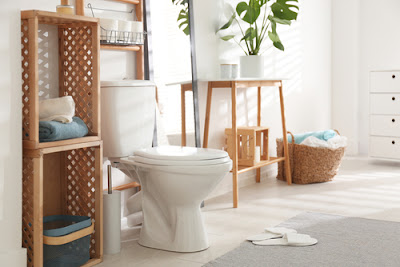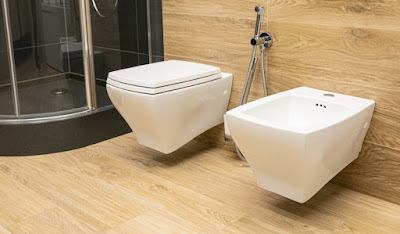Read more
8 Entrancing Realities About Latrines
We invest a considerable lot of energy on the latrine. We rely upon the porcelain installations to move the metabolic results of our bodies concealed and out of our residences. From the beginning of time, social orders have had various perspectives, propensities, and manners in regards to latrines, and, surprisingly, changed objections for their latrine yields. Regardless of their omnipresence today, a big part of the total populace — almost 4 billion individuals — need protected and sterile latrine offices. The following are a couple of realities to cause you to see the value in our wonderful loos on World Latrine Day, November 19.
1. Late Stone Age people assembled simple latrines a long time back.
In Skara Brae, a Neolithic town on Scotland's Orkney Islands, archeologists found "a 5000-year-old, stone-fabricated seepage channel which associated the house to an outfall at the ocean edge." The channels had initially been fixed with tree husk to make them watertight — a surprisingly modern framework for now is the right time. A piece later, privileged homes in Mesopotamia and old Egypt had seats laid over channels that prompted cesspools, where waste was gathered for use as compost. The absolute earliest flushing latrines showed up among settlements in the Indus Valley around 2500 BCE.
2. Involving public latrines in old Rome was a social encounter.
To keep their large urban areas from suffocating in human compost, the Romans constructed public latrines. Their remainders can in any case be tracked down in the remnants of a few Roman urban communities — for instance, in Ephesus in cutting edge Turkey. They were generally only a progression of butt-sized openings, cut around 10 inches separated, in lengthy marble chunks exposed over sewer drains. They had neither slows down nor dividers, so discharging one's entrails was a social encounter. The old latrine attendees had essentially less hindrances than we do today when it came to doing their personal business — however their frocks might have given some unobtrusive cover.
Regardless of the absence of tissue — which wouldn't be efficiently manufactured until 1857 — the Romans cleaned. They cleaned their behinds with a tersorium (in a real sense, "a cleaning thing"), a device contained an ocean wipe joined to a stick. Clients washed the wipes in water that moved through a shallow drain at their feet.
Whether they cleaned up subsequent to utilizing the latrines is muddled. In the event that they did, it presumably didn't make a big deal about a clean distinction, on the grounds that the tersoria were probable shared by all the butt-wipers who traveled every which way over the course of the day.
3. Antiquated Chinese and Japanese social orders didn't flush — they reused.
In pre-modern Japan and China, stool was an item too significant to even consider washing away for good. Ranchers involved human crap as a genuinely necessary manure to continue taking care of the developing metropolitan populace. Named "night soil," it was meticulously gathered in pails by each metropolitan family, and got each day by extraordinary authorities called fenfu. They brought their trucks brimming with poo to the ports, where it was stacked into boats and cruised out to the open country. Ranchers bought the sludge and treated the soil it into humanure. The Japanese called it shimogoe, "compost from the lower part of an individual." Ranchers of the time couldn't envision squandering that valuable waste.
4. The primary present day latrine model was worked by a writer.
The extraordinary granddad of our porcelain john was contrived by Sir John Harington, a godson of Sovereign Elizabeth I. Harington, a writer who fell all through her highness' approval for his scandalous refrains, was at last exiled from the court and shipped off Shower in southwest Britain. There, he exchanged his pen for plumbing devices and manufactured a flushing latrine in 1596. Named Ajax (a play on jakes, Elizabethan shoptalk for a privy), it had an arrangement of handles to exhaust water from a storage while the client at the same time opened the valve switches to flush the waste items down the lines. (Precisely where the lines drove isn't known, however it's probable they went right external the home.)
Purportedly, the sovereign visited her underhanded godson a few months after the fact, attempted the contraption herself, and enjoyed it. Harington constructed a comparable contraption for her at Richmond Castle.
5. English designer Thomas Toilet culminated the flush latrine.
Harington's Ajax didn't get on immediately. Two or three hundred years after the fact, English architect Thomas Toilet (indeed, that is where the specialized term comes from!) refined the plan to seem to be our advanced high position and accomplished other things to advocate latrines than nearly anybody in Victorian Britain. Toilet refreshed the pipes in Windsor Palace, Buckingham Royal residence, and Westminster Convent. He protected the ballcock, the weaving instrument inside a latrine tank, which keeps water from spilling over. In 1870, he even opened the main latrine display area and permitted clients to evaluate the product before buy.
The Toilet name was decorated on the above storages of Toilet's latrines, in the end becoming inseparable from the item. As the Thomas Toilet and Co. Ltd. says on its site, "We accept that you can't say 'Toilet' without grinning."
6. Flush latrines aren't the main sort of latrine.
In country regions and areas of the planet without sterilization framework, where flush latrines aren't pragmatic, many individuals utilize dry latrines. These frameworks don't utilize water, yet discard human waste securely. Dry latrines can be essentially as fundamental as a pit lavatory, where the latrine client sits or squats over an opening in the ground and the waste is stored to an underground pit, which could possibly be intended to be discharged. Port-a-potties, treating the soil latrines, "treebogs" (a raised construction and waste heap encompassed by supplement retaining plants), and burning latrines are instances of dry latrines.
7. Super advanced savvy latrines can clean themselves.
Present day savvy current latrines can do astounding things. They can lift their covers when they see you coming so you don't need to contact them. Their seats can right away warm up to your internal heat level. They can play music to keep you involved while you do your business. Toward the end, they wash your butt and blow warm air to dry it (particularly supportive for individuals with restricted versatility). Japanese maker TOTO views that perspective so in a serious way that its staff members test new models in unique portability restricting suits.
American producer Kohler has comparatively creative models that accompany a telephone size controller for the latrine's full rundown of capabilities. They can play your number one tunes and answer your voice orders. Subsequent to cleaning your lower areas, these latrines clean themselves with cutting edge highlights: whirling similar water around the bowl on various occasions prior to flushing; electrolyzing the water with worked in cathodes to make it more bactericidal; and in any event, obliterating microbes with UV light.
8. A big part of the total populace doesn't approach safe latrines.
Latrines in the West might be getting as shrewd as their clients, however almost a portion of the total populace needs admittance to latrines and legitimate disinfection. The Places for Infectious prevention and Counteraction gauges that around 3.6 billion individuals need "securely oversaw sterilization" in their homes, for example, flush latrines that discard squander in a sewer framework or septic tank. Of those, 1.9 billion individuals live with as it were "essential" disinfection administrations, which frequently implies latrines and restrooms that will generally top off or spill over in weighty downpours.
Furthermore, almost a portion of a billion group are compelled to go out into the bramble when nature calls. That is especially perilous for ladies and young ladies, particularly when they need to do as such around evening time and in dim spots. On top of that gamble, snakes, harmful bugs, and bigger hunters can be sneaking in obscurity — perils the majority of us couldn't envision.
That's right, existence without latrines is pretty sh*tty — so the following time you pull that switch, recollect how lucky you are.














0 Reviews